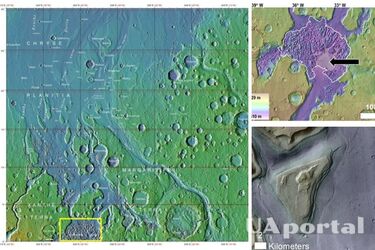They plan to search for extraterrestrial life there: Scientists discover ancient mud lake on Mars

The question of searching for evidence of life on Mars is always a hot topic. Although evidence has not yet been found, scientists continue to look for it in different regions of the planet, with a particular focus on different sedimentary deposits.
One possible area being considered by scientists for investigation is an ancient mud lake. Researchers believe that this lake may contain evidence of life, as the huge deep sediment deposits may preserve traces of past living existence. About this writes Sciense Alert.
Read also: Scientists answered how many people are needed to colonize Mars
There are several regions on Mars where this evidence can be found. One such region is the Jezero crater, where an ancient paleo crater with large deposits of sediments is located. However, there are other areas that should also be considered.
A recently published paper titled "Investigating sedimentary remnants of the Mid-Amazon Aquifer in the Martian Chaos region" looks at the possibility of investigating the aquifer in the Hydraotes Chaos and Oxia Palus region. Researchers believe these regions may contain traces of an ancient mud lake and evidence of life.
They are currently focus on the sources of the sediments rather than the regions where sediments are already known. The authors of the paper argue that investigating the sources of sediments may be a more promising approach. One advantage of this approach is that it reduces the risk of mixing sediments from different sources, making it more difficult to identify evidence of life.
The article also notes that the Hydraotes Chaos region may be more attractive to explore because of its simpler landscape and the possibility of finding evidence of life in mud sediments. Exploring this region may prove more successful for finding biosignatures and traces of ancient life on Mars.
It is important to note that regions with large deposits of sediment on Mars have great potential for exploring and searching for life. Smaller rovers can be used to sample sediments in different areas, improving the chances of finding evidence of biological activity in Mars' past.
Recall, astronomers were able to record a radio signal from a distant galaxy, 8.8 billion light years from Earth. It may be associated with an alien civilization.
Want to receive the most up-to-date news about the war and events in Ukraine - subscribe to our Telegram channel!
